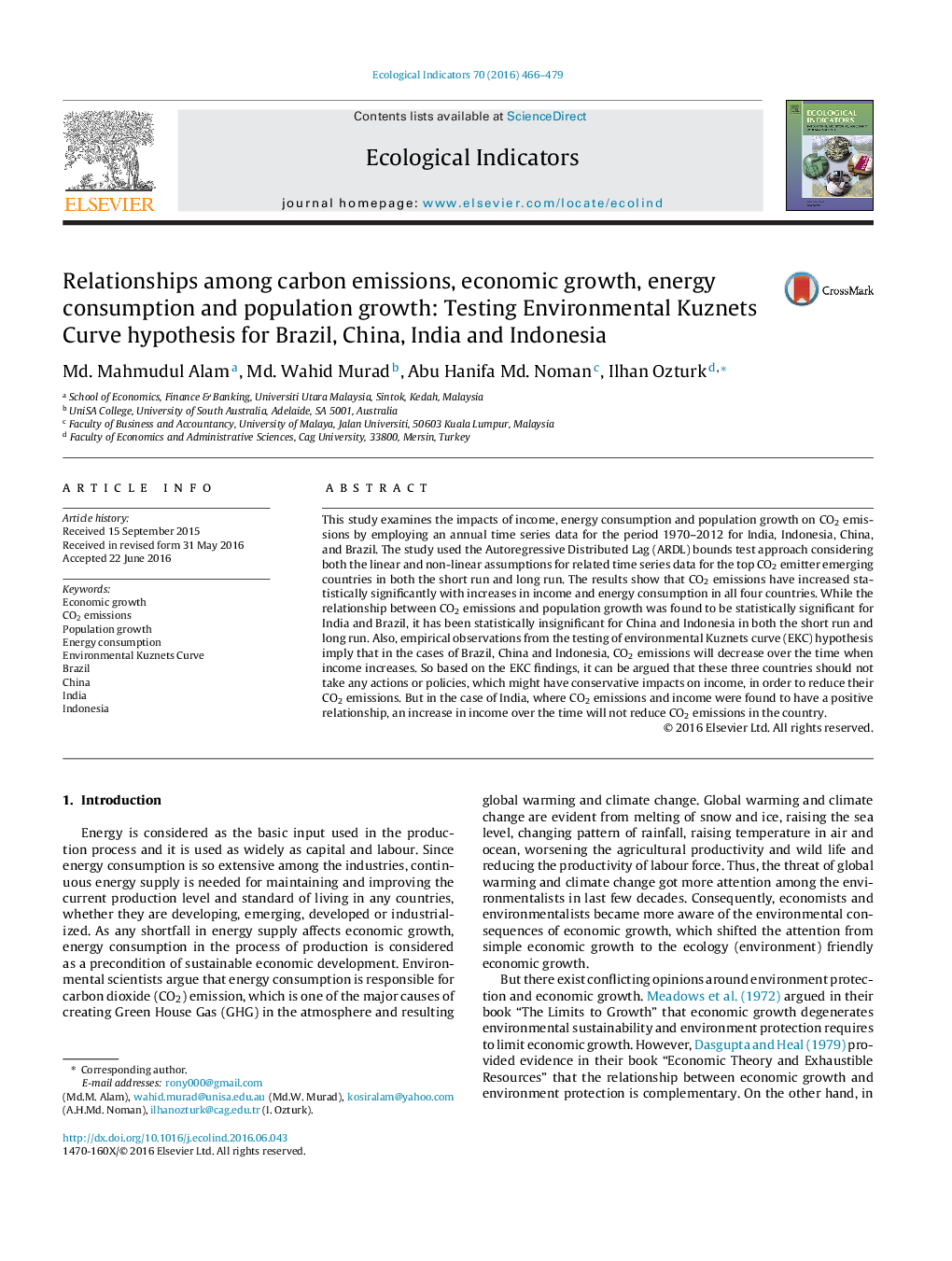| Article ID | Journal | Published Year | Pages | File Type |
|---|---|---|---|---|
| 6293139 | Ecological Indicators | 2016 | 14 Pages |
Abstract
This study examines the impacts of income, energy consumption and population growth on CO2 emissions by employing an annual time series data for the period 1970-2012 for India, Indonesia, China, and Brazil. The study used the Autoregressive Distributed Lag (ARDL) bounds test approach considering both the linear and non-linear assumptions for related time series data for the top CO2 emitter emerging countries in both the short run and long run. The results show that CO2 emissions have increased statistically significantly with increases in income and energy consumption in all four countries. While the relationship between CO2 emissions and population growth was found to be statistically significant for India and Brazil, it has been statistically insignificant for China and Indonesia in both the short run and long run. Also, empirical observations from the testing of environmental Kuznets curve (EKC) hypothesis imply that in the cases of Brazil, China and Indonesia, CO2 emissions will decrease over the time when income increases. So based on the EKC findings, it can be argued that these three countries should not take any actions or policies, which might have conservative impacts on income, in order to reduce their CO2 emissions. But in the case of India, where CO2 emissions and income were found to have a positive relationship, an increase in income over the time will not reduce CO2 emissions in the country.
Keywords
Related Topics
Life Sciences
Agricultural and Biological Sciences
Ecology, Evolution, Behavior and Systematics
Authors
Md. Mahmudul Alam, Md. Wahid Murad, Abu Hanifa Md. Noman, Ilhan Ozturk,
